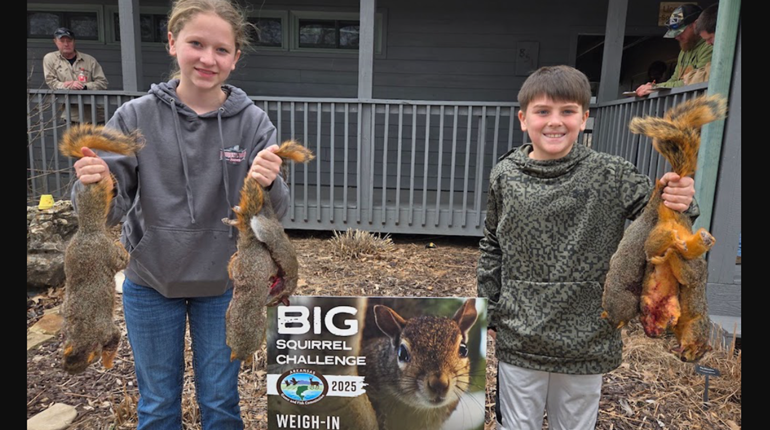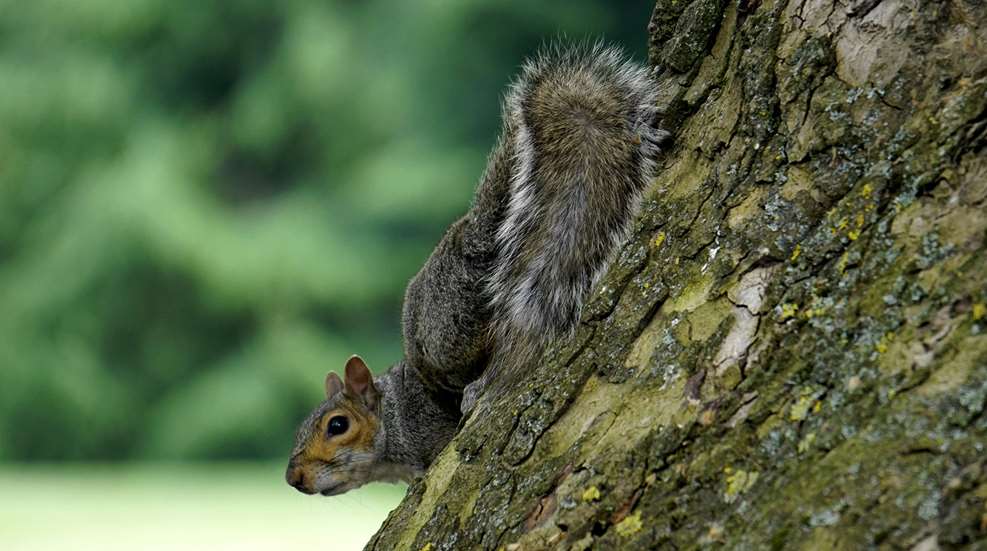
Ricky motored upstream and eventually crosscurrent, total distance perhaps a quarter mile. A slough waited. It would be boney by July, but at present its waters were deep enough to host a johnboat and permit entrance from the main flow. Woods outlining this stretch of river and slough spoke of spring. Oak leaves still young and sparkling with delight. Shaggy cypress foliage replacing the denuded bleakness of a few weeks back.
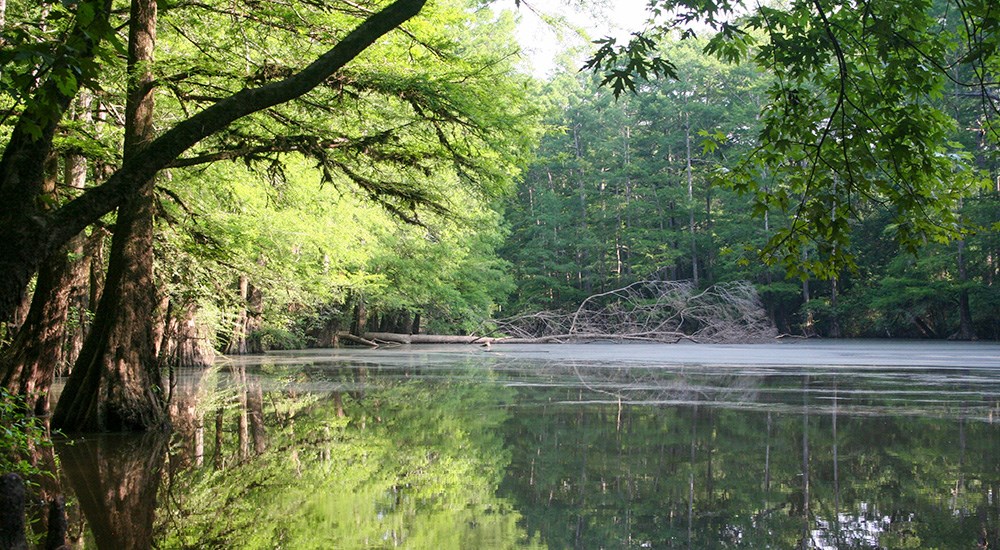
Occasionally there were encountered those proud sentinels that had overturned, some fresh and some positioned from years past. Victims of the river’s whims and its intrusion upon sustaining roots or an errant windstorm that coaxed the giants to concede. Depending upon posture, some of these behemoths often refused our bid for clear passage and demanded a less direct route. An inviting lake presented off to the right; it would require another visit for bluegills. And wood ducks come winter. A pair squealed their displeasure with our intrusion and burst skyward.
Ricky remained judicious, always cautious of a potential hang-up or damaged prop or sequestered cottonmouth within the tangles. It was blatantly obvious that the skipper possessed navigational skills, knew his course and his destination. A ditch, its terminus ahead. We nudged into its quiet and stepped ashore, became guests of moist sand and dank leaves and squirrel country.
I unapologetically and gratefully admit that my early life was a Spartan affair. Solid and blessed though it was, we, and those who lived close and maintained similar livelihoods, had limited resources outside the essentials. Perhaps impacted by this lack just highlighted, those two words, squirrel country held a peculiarly enchanting fascination, their symbolism referencing far more than their simplistic usage suggested. Well being; familial bonding; food; celebration. That symbolism also referenced pedagogy.
Every dad and every son—the occasional mom or daughter; society was different back then—went squirrel hunting. All were at some point during a given year precariously perched on a cliff overlooking dire straits, and squirrel hunting was a form of salvation. It smoothed out the dimples of distress and chased away the emotional marauders that consumed any consideration of even the most innocent entertainment. It provided some measure of recreation when such activity was otherwise forbidden by the necessity of scratching out a paycheck from stubborn soils. Without question, teaching abounded.
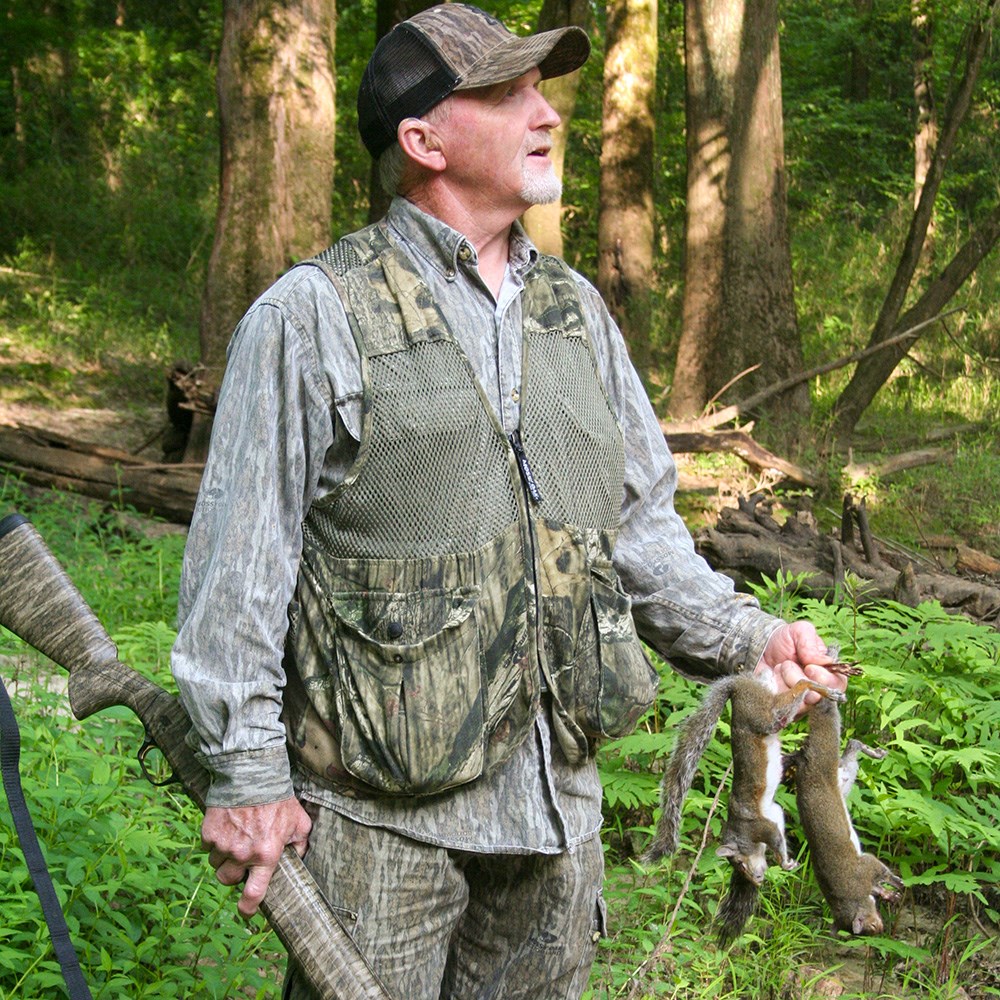
One primary lesson that now seems unlearned was that acquiring food was expensive. Not in dollars specifically, but in effort. And if that acquisition pertained to meat in any form, it demanded a high tariff. A life-and-death expenditure. Meat was not grown fully packaged and ready for purchase, an entity given little thought apart from how to prepare it for supper. We, those of us in the environs I called home, learned and came to terms with this fact in our own ways. A single-barrel shotgun did the rest.
“Which way do you want to go?” Ricky uncased his A5. He had hunted these woods before and was gracious in his query. I had not and held no preference. “This sand ditch winds along south, and you can move in it without much noise.” He pointed out the direction. “I’ll go up this way.” I nodded and got my shotgun from the boat. The venue was a narrow but long strip of public land along the river. Farther down, waterside subdivisions clustered so rifles were not allowed on the entirety of this property. We offered that good luck wish and went our separate paths.
My preference for squirrel hunting leans hard toward a .22, specifically a Marlin 39A with Skinner aperture. This rifle so configured is not only effective but thoroughly the winner in cool-factor competition. But a rifle not permitted, I took a little unit I have long used and have long appreciated. A Beretta Silver Pigeon I in 28-gauge, now with a multitude of battle scars from heavy work. One barrel wore a modified, the other a full. Carlson’s chokes. Federal 1-ounce No. 6’s in the chamber. From a near lifetime of my love affair with squirrels, I have held tightly to No. 6’s, and 1 ounce is adequate for most chores in the bushytail business. I eased off along that ditch as daylight gained ample purchase to brighten footfalls, this required to circumvent an unpleasant encounter with snakes.
Down the way a bit, 100 yards or so, that ditch I was following rose from its steep banks and morphed on the offside into a gentle fall that gave way to another slough, this one nothing like the one we had motored up. This one was shallow, already admitting defeat unless spring and summer rains created some overflow that would again replenish its water supply. This one was little more than a boggy obstacle that required hiking around or slogging through with knee-highs, its bottom reluctantly relinquishing its hold on each step. My plans were to avoid either route if possible, so I sat quietly at the base of a cypress and thanked God for the morning.
And then it happened. A squirrel emerged and scooted to the end of a wispy limb just at the upper end of that struggling slough. I switched the barrel selector to full. While modified would likely have performed fashionably, I opted for insurance. The squirrel splashed into wet leaf litter and swamp mud and cloudy water. I promptly retrieved. He was a fine specimen. Fat and fluffy and inviting as stew material. Fluffy, that is, until he dropped in that clutter. Now he was disheveled. I thought of photos to come after the hunt. He was not going to be a prime subject. I heard Ricky’s Browning rumble over there a ways.
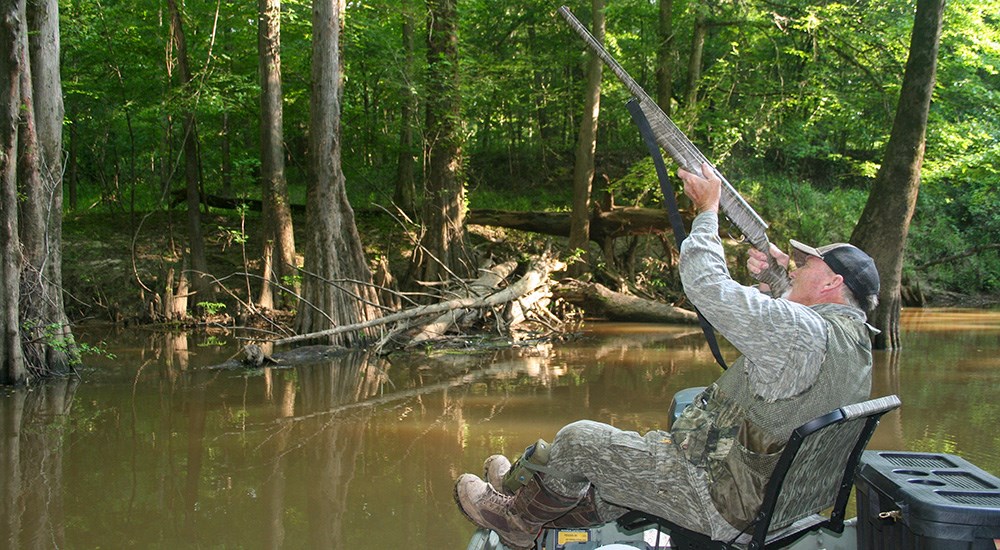
My locale now revealed and the woods thoroughly molested by my scurrying, I moved a few yards and sat at the base of an oak in another cloistered hideout. The surroundings simultaneously smelled fresh and musty—the fresh from a crisp spring morning and sunrise and newness, the musty from decaying leaves and swamp mud. I like that smell—that musty one. The fresh one as well. But the musty triggers recall that takes me to the days my dad piggybacked me through the same kinds of stations that generated that smell. It was pleasant. Those were the days when my dad was responsible for getting me through the rough spots. I waited there quietly, letting memories flood.
Spring squirrel hunting is not a regimen I grew up practicing. I seem to recall the old folks talking about a mulberry season for squirrels, but it had been set aside or ignored or some such by the time I began hunting. Only recently has my home state of Mississippi instigated adoption of that opportunity. Biologically, it was determined, a carefully structured spring season, short though it is, would have no negative impact on squirrel populations. The one I function under is May 15 through June 1. Limit four.
Seems few hunters have taken to it, but it is in place now for any who choose. I choose. But I choose with discretion. We often get a brisk morning or two during the season timeframe, and when the weather prognosticators indicate such a happening is in the making, I go. That is not to say it is jacket weather, but a touch of briskness is ample. Mid-May and into June can be sweaty hot here. And while spring hunting is similar to fall, it does differ slightly in implementation. Food is key.
Squirrels treasure acorns. But in spring acorns are hardly an option. The same goes for hickory nuts and beech mast. There are those nuts that squirrels have buried, and the target-de-jour will unearth and feed on those stockpiles. But the new fruit is not available. Here in the South, buds, mushrooms, berries and even some invertebrates are employed as a food source by squirrels. Knowing where such foods are allows a like tactic as does sitting near an oak or hickory in autumn. Squirrels will be along directly.
And there is always the common standby used by many hunters of easing through the woods and keeping an eye out for squirrels. And if one elects such an approach, that one should keep that eye out on the ground as much as or more than in the trees. A casual but focused stroll in spring woods can be productive. Naturally, that stroll or that sit-and-wait is best done in early morning. It can be successful in late afternoons, but spring temperatures may be disagreeable and late-day leaf duff will be noisy unless rain has been recent.
One method that is highly enjoyable and fruitful is hunting from a watercraft where legal. Drifting or paddling through woods-lined waters can be an ideal escape from the bugs and snakes, and in some settings it can afford as many sightings as does sitting or creeping in the woods. Canoes and kayaks are the ideal crafts for this chore. If the outing is a two-person endeavor, only one gun is needed and only the hunter up front will shoot. Anything other is flirting with disaster.
From my new station after I had taken that first squirrel, I sat silently. But the sit was not long. Twenty minutes later, perhaps even fewer, another squirrel shook a limb in the distance. This one’s route indicated he would come my way unless I moved or otherwise let my presence be known. I did none of that. And presently this accommodating prey was head down on the trunk of an oak. Elbows on knees turkey-hunting style and barrel selector set on modified, I tugged the trigger. The second of that morning dropped. I held tightly in the posture I had assumed. It seemed squirrels favored my chosen arena. I was never quite certain why, but there was some food somewhere close that was enticing. As I waited, I thought.
This seems an annoying habit to which I have long fallen victim. This thinking. But I concluded years back that thinking—proper thinking, not bellicose thinking—was often productive. Melancholy at times, but productive. I thought. And through that thinking my first ever squirrel came to mind.
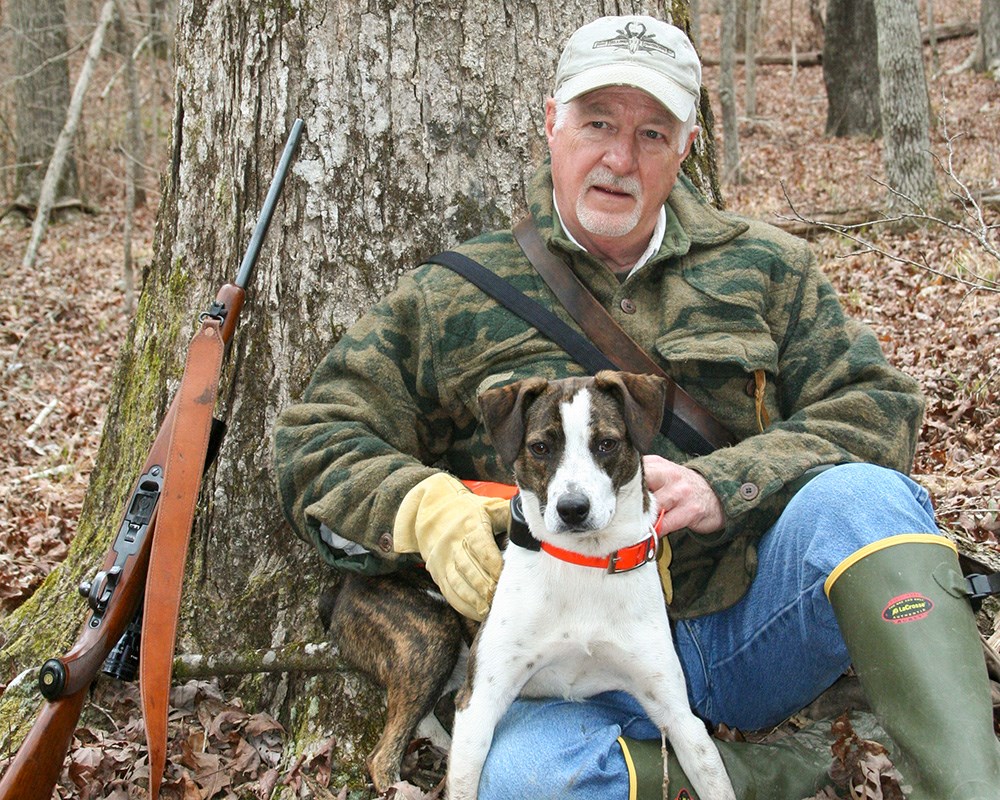
As expected and as usual, I was with my dad. He wanted me to get my first squirrel; I wanted to get my first squirrel. A new Stevens .410 gripped tightly in small and cold and trembling hands. The .410 was a two-months-early Christmas present that we could little afford. My dad had this curious habit of tilting his head while looking and listening for a squirrel. He did so that morning beside a hickory tree where we sat. A mosquito perched on the tip of dad’s nose, but he didn’t bother. He simply tilted his head. A limb shook.
“Aim forward on him.” My dad’s whisper echoed what he had told me before we started out that morning. “When he stops.” I quivered. There was a red, paper-hulled shell of No. 6’s in that tiny tube. Those 6’s worked well. “Ease over there and pick him up.” Dad wanted me to experience the complete process. “Then come back here and sit. Another one may come along when things settle.” I did as instructed, but my eagerness was too invigorating to wait. We went home to tell my story.
I recognized almost immediately that the saddened glee I was feeling that morning was an integral ingredient of what hunting is about. It reinforced what I had suspected all along, even before that .410 and during those hunting discussions my dad and I engaged in around the kitchen table or during farm chores. Now I knew the pain and the exhilaration. The true cost of gathering food. That recognition has served well throughout a protracted and storied life of hunting. No regrets.
Then another sharp crack from Ricky’s direction. And then two more from where I sat. That was the limit. Four. I opened the action of my 28 and stuffed the empties into my pocket. Ricky and I met back at the boat. It had been a grand beginning to another spring day.
I hope to again do more spring squirrel hunting, but there are no guarantees. Recent events in my life verify this. But I still hope for more spring squirrel hunting. It adds intrigue and sobriety to living.














